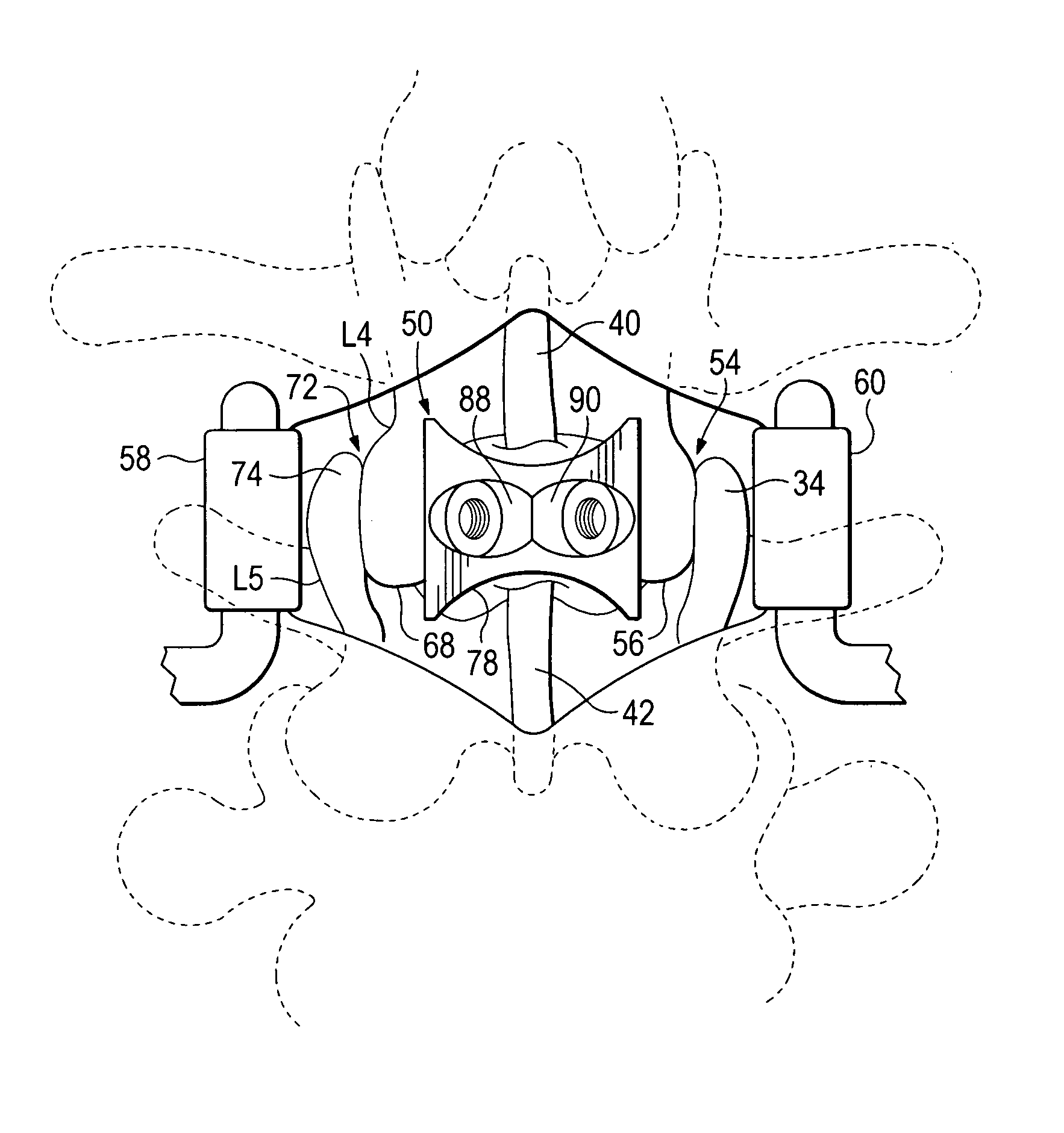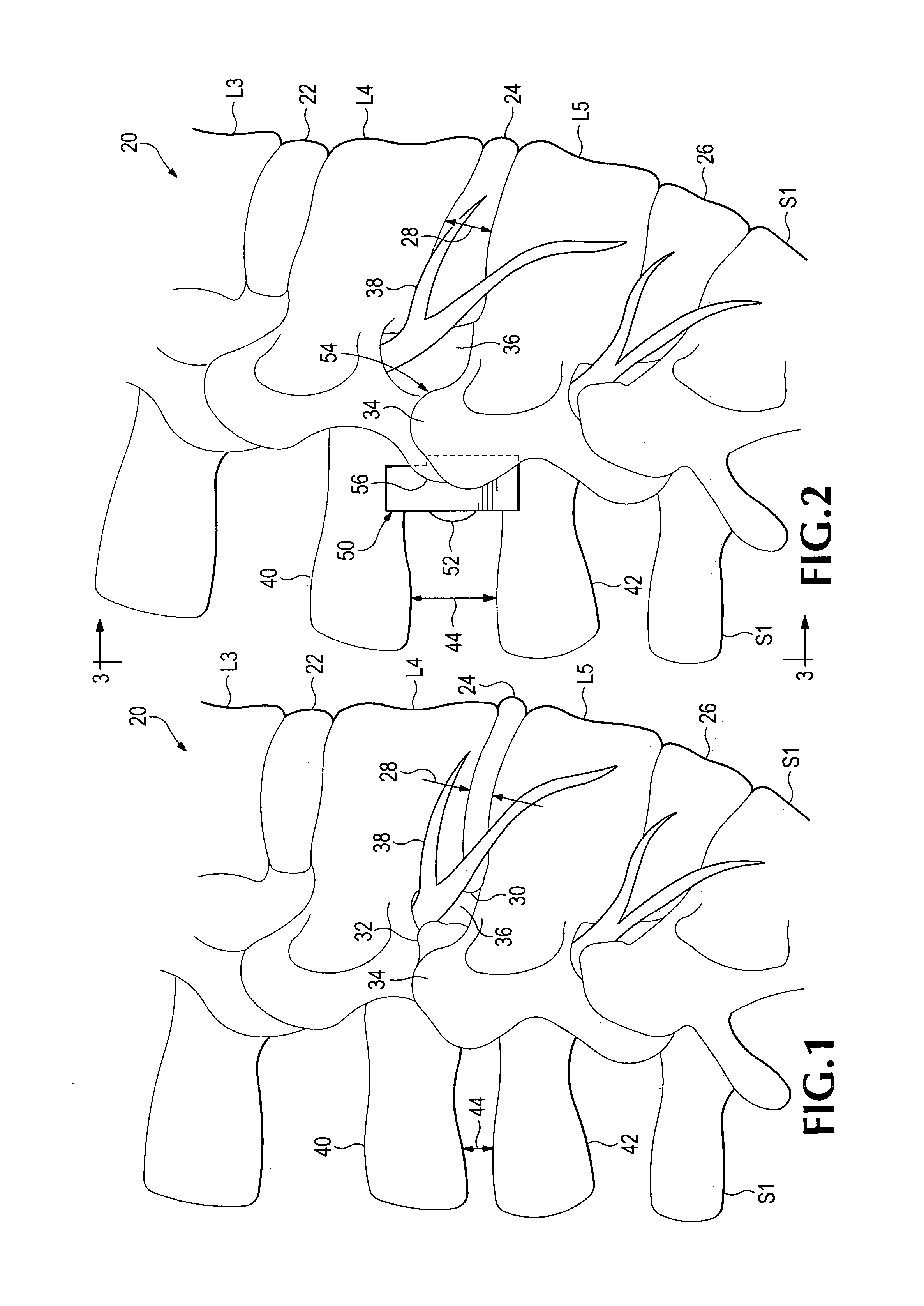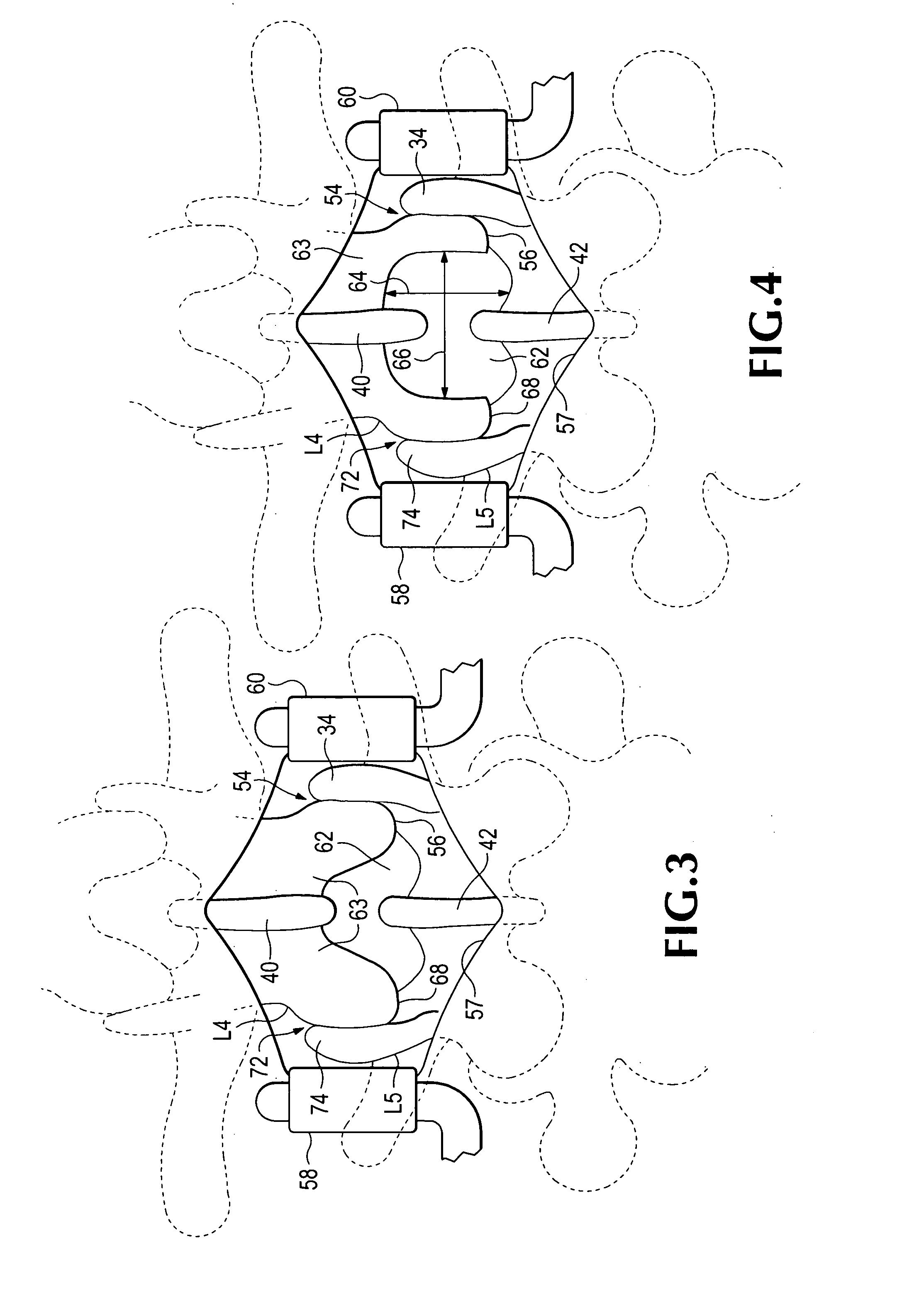Interspinous spacer and facet joint fixation device
a technology of interspinous spacer and facet joint, which is applied in the field of spinal surgery, can solve the problems of spinal nerve root pressure, intervertebral discs and other parts of the spinal column deteriorating, severe and even debilitating pain,
- Summary
- Abstract
- Description
- Claims
- Application Information
AI Technical Summary
Benefits of technology
Problems solved by technology
Method used
Image
Examples
Embodiment Construction
[0029]Referring now to the drawings which form a part of the disclosure herein, in FIG. 1 a part of a spinal column 20 is seen in profile from the right lateral side. The illustrated part of the spinal column includes a sacrum S1 and lumbar vertebrae L5, L4, and L3. Intervertebral discs 22, 24, and 26 separate the vertebrae from one another and, in a healthy individual, maintain sufficient spacing between adjacent vertebrae.
[0030]In the spinal column 20 as shown in FIG. 1, however, the disc 24 between the L4 and L5 vertebrae has deteriorated and has allowed the spacing 28 between the L4 and L5 vertebrae to decrease markedly from normal spacing. The L4 vertebra has also been able to move ventrally with respect to the L5 vertebra, and the disc 24 is herniated and has bulged in a dorsal direction, as shown at 30. The superior articulating process 34 of the L5 vertebra has become hypertrophied, and an osteophyte, or bone spur 32 protrudes from it toward the nerve root 38.
[0031]The combi...
PUM
 Login to View More
Login to View More Abstract
Description
Claims
Application Information
 Login to View More
Login to View More - R&D
- Intellectual Property
- Life Sciences
- Materials
- Tech Scout
- Unparalleled Data Quality
- Higher Quality Content
- 60% Fewer Hallucinations
Browse by: Latest US Patents, China's latest patents, Technical Efficacy Thesaurus, Application Domain, Technology Topic, Popular Technical Reports.
© 2025 PatSnap. All rights reserved.Legal|Privacy policy|Modern Slavery Act Transparency Statement|Sitemap|About US| Contact US: help@patsnap.com



